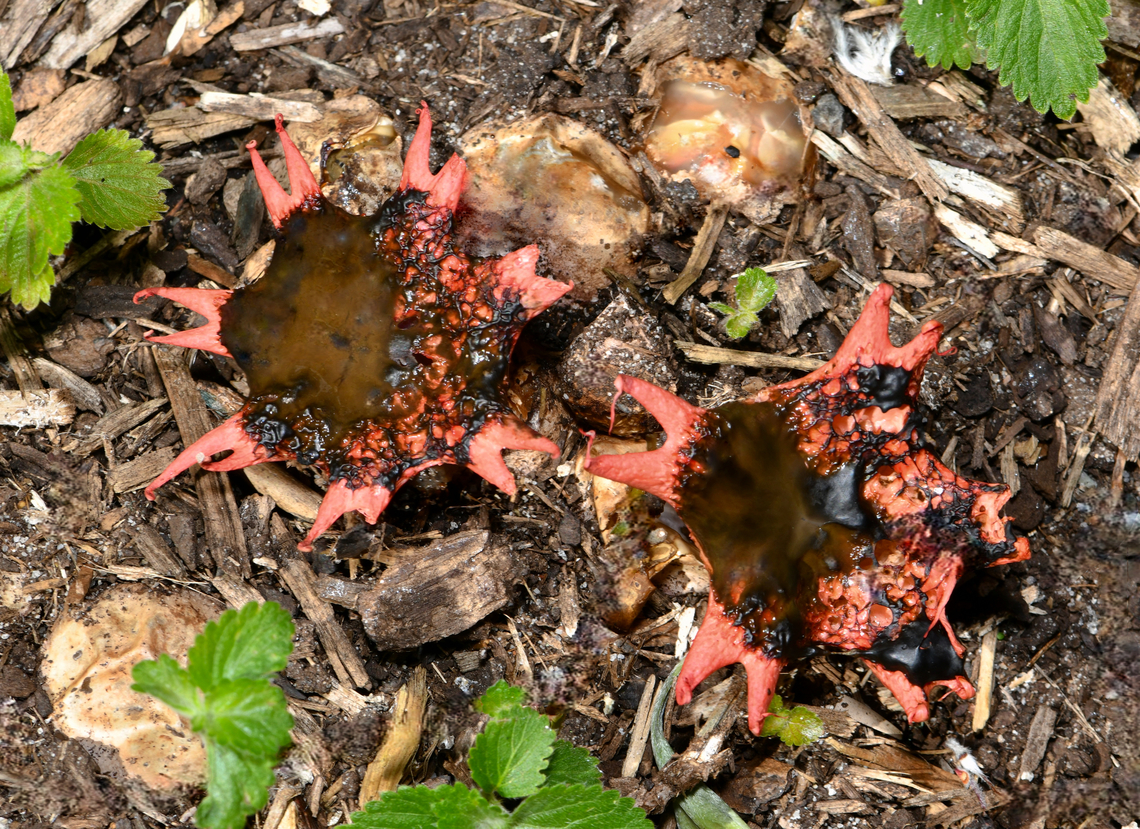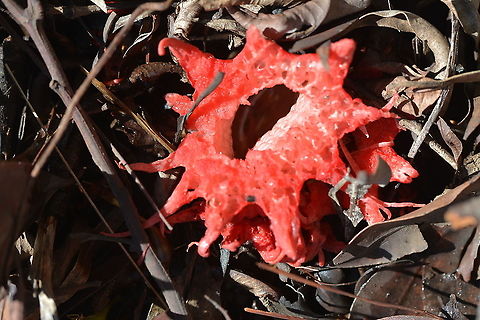 Promoted
Promoted
Anemone stinkhorn
I learned that this was the first native Australian fungus to be formally described in 1792.
Beginning as a partly buried, whitish egg-shaped structure (see top of image), which then bursts open as a hollow white stalk with reddish arms. The orange/red star-shaped structure is covered in brown slime which attracts flies. The flies help to disperse the spores.
Can grow to a height of 10 cm.

"Aseroe rubra", commonly known as the anemone stinkhorn, is a common and widespread basidiomycete fungus recognizable for its foul odour of carrion and its sea anemone shape when mature. Found in gardens on mulch and in grassy areas, it resembles a red star-shaped structure covered in brownish slime on a white stalk. It attracts flies, which spread its spores.

comments (4)
Posted 2 months ago